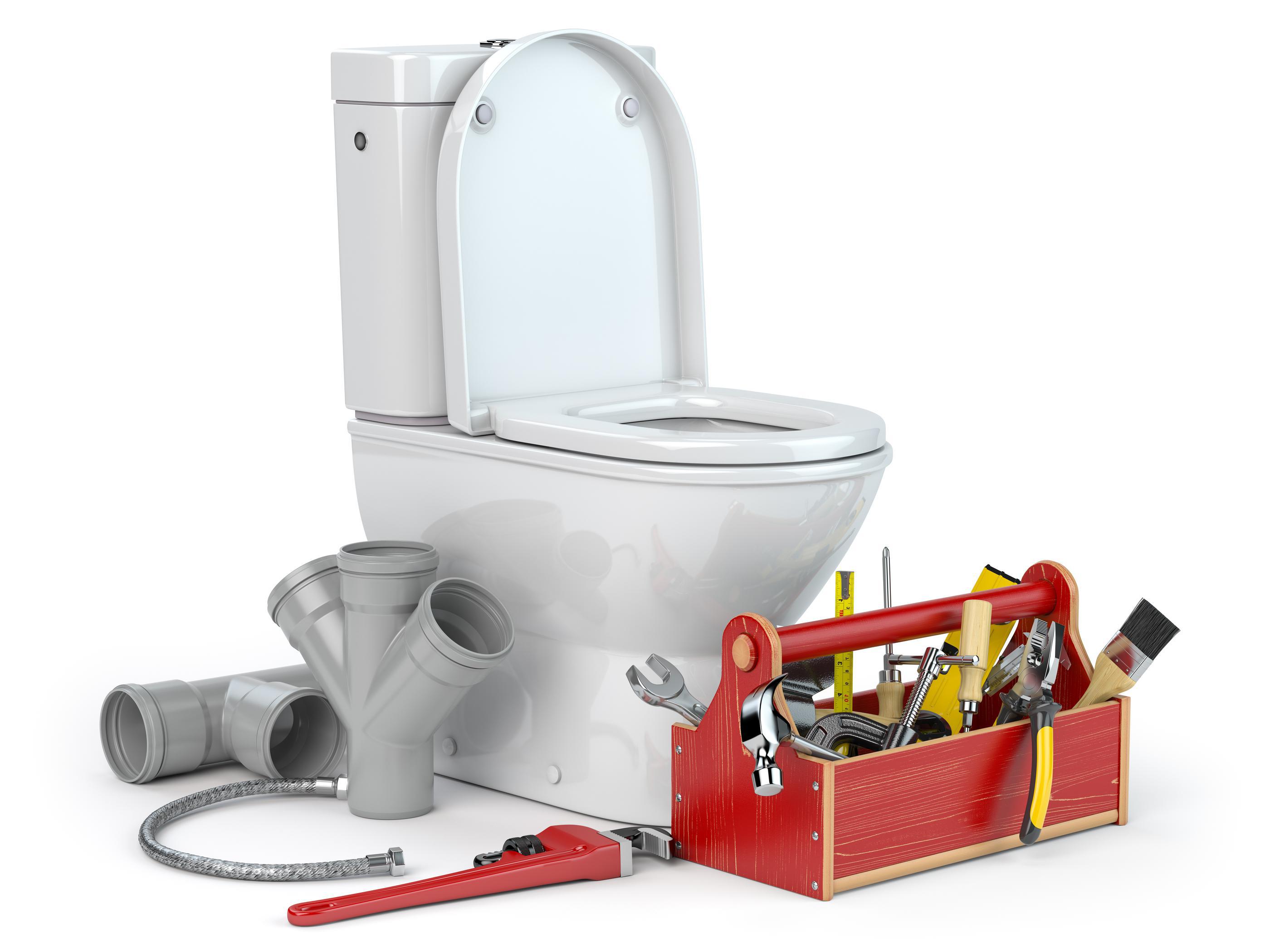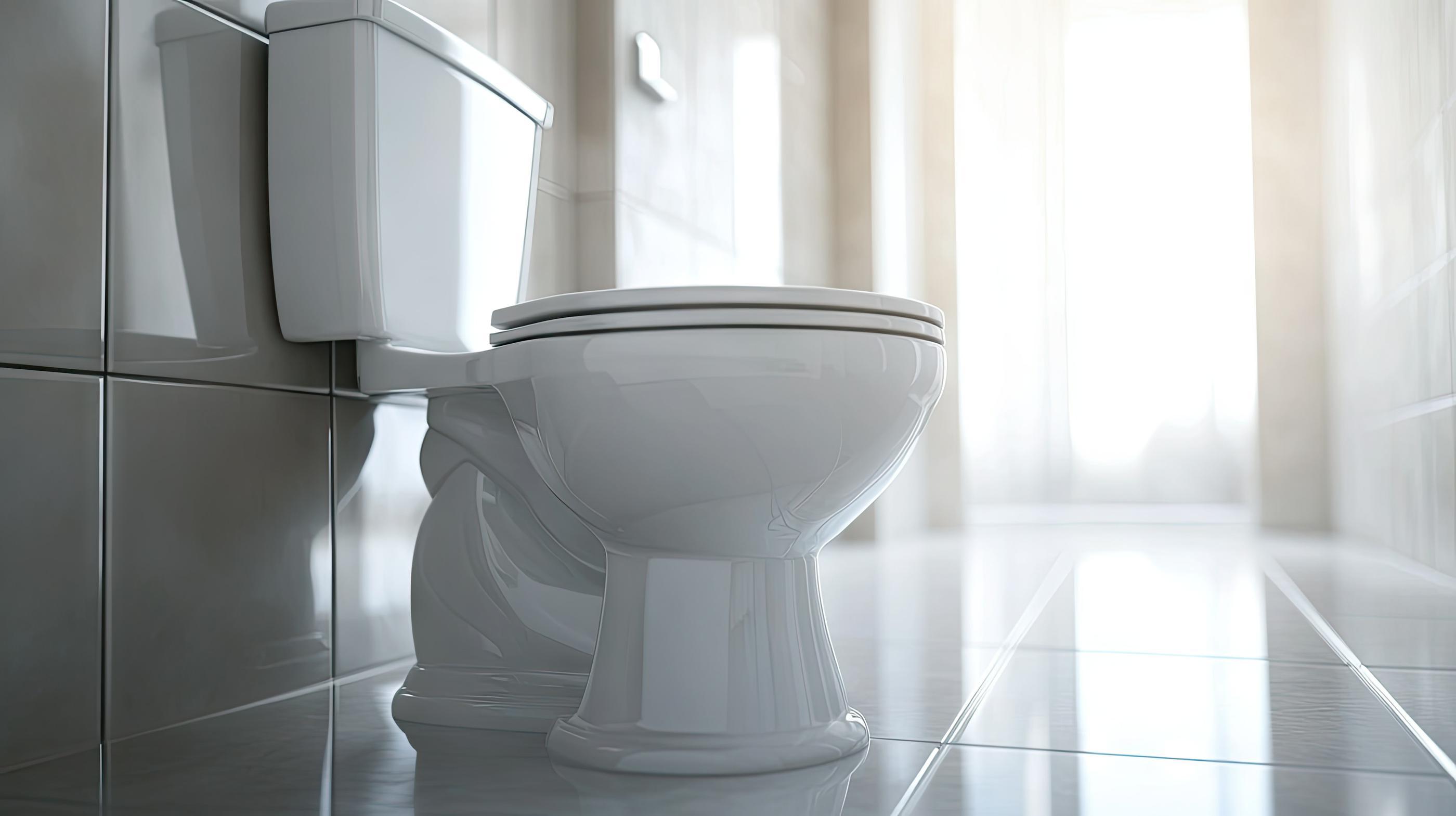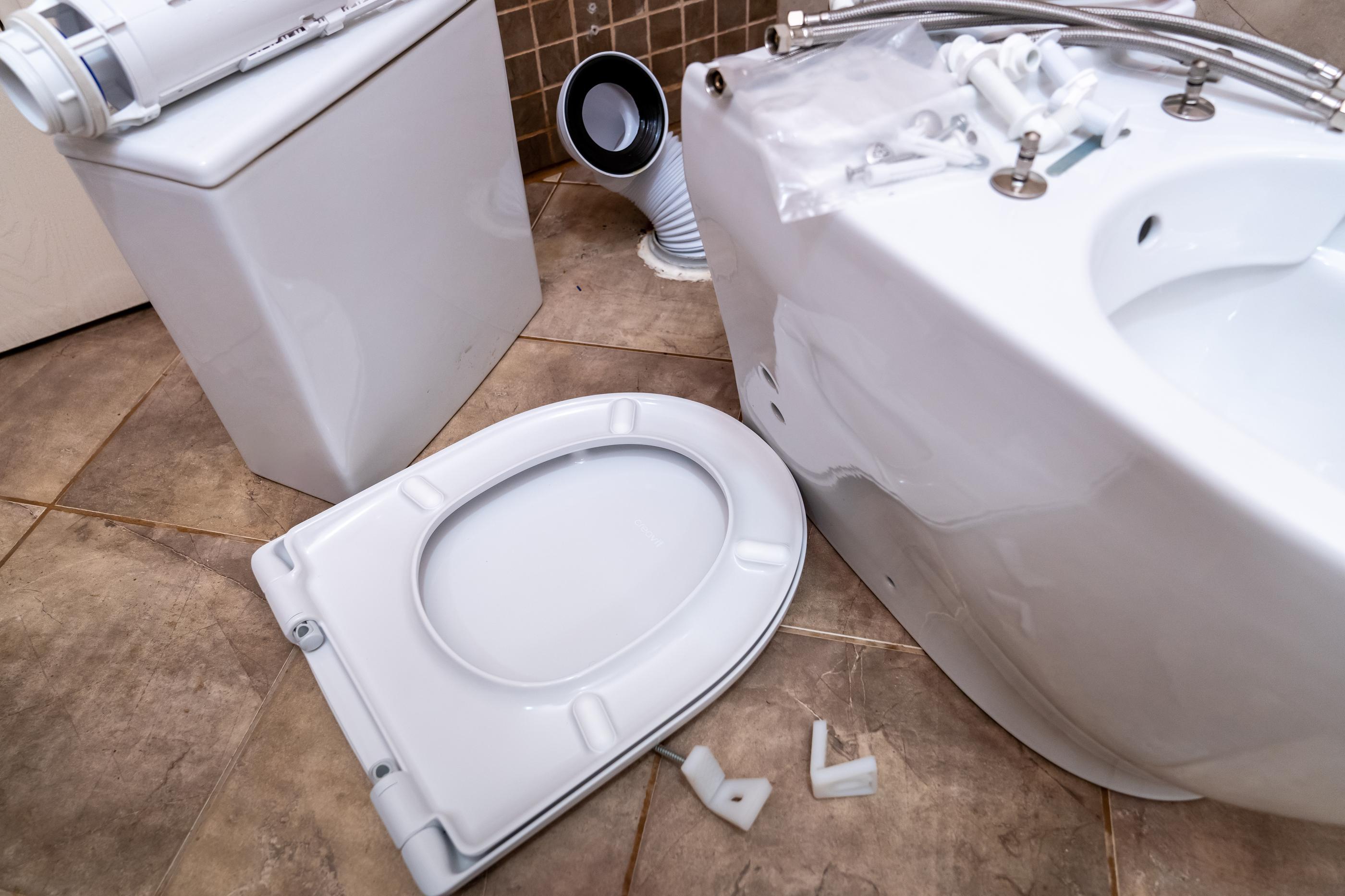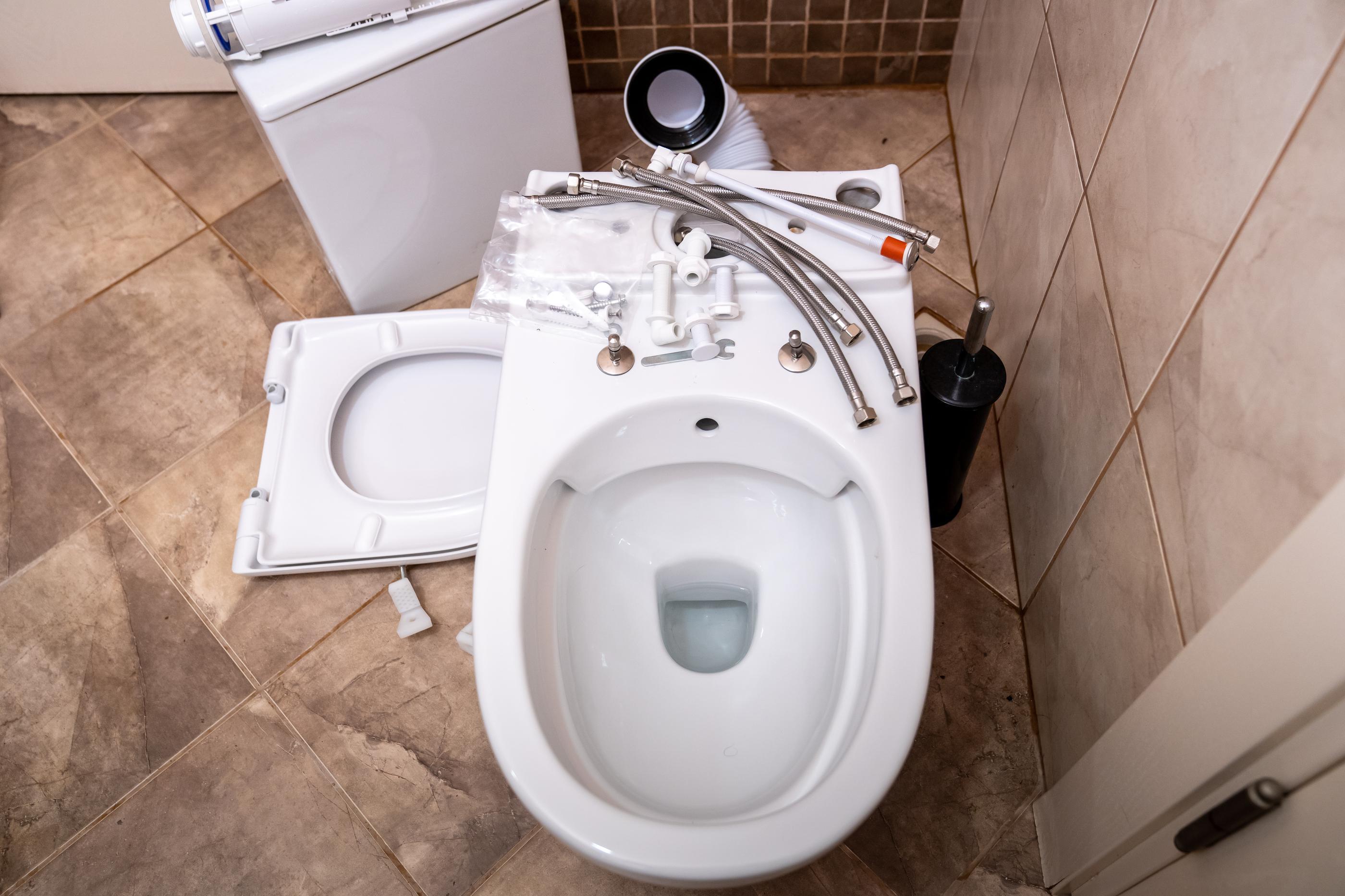

It sounds like a difficult job, but with just a little bit of research, some patience, and the right tools, putting in a new toilet is a home improvement project you can do on your own. Some toilet types are harder than others, but with our guide, most are straightforward.
While we advise homeowners to get help from a locally owned and operated plumber, if you have the skills and physical ability, installing a new toilet yourself can be a good DIY project.
Why You Should Install a New Toilet
Household toilets get used a lot and go through a lot of wear and tear. Because toilets account for a large percentage of your home’s water usage, an obvious benefit to installing a new, more efficient toilet is lowering the amount of water used daily. So, replacing an old toilet can make a difference in your home’s efficiency and your monthly bills.
Additionally, like everything else, there have been advances in toilet design and technology. Modern toilets are more efficient, and the right one won’t use as much water as that old, running noisy commode. These days, new toilets can come with seat warmers, features that pre-mist the toilet bowl before you use it, an air dryer, a night light, an automatic lid, or self-cleaning.
The possibilities seem endless.
What You Will Need to Install Your New Toilet
These days, most new toilets come boxed with most of the supplies you’ll need to install them. However, there are a few things you will need to have on hand, like a wax ring (if it was not already included), an adjustable wrench, waterproof silicone caulk, and (of course) the new toilet.
You also will need to have the ability to lift anywhere from 60 to 120 pounds to lift the old toilet out of the way and the new one into position.
Also, remember that the toilet flange needs to rest on top of the finished floor. The flange connects the toilet bowl to the drainage system and secures the entire unit to the floor with a wax seal.
Most Common Types of Toilets

If you haven’t bought a new toilet yet and are wondering what type you should purchase, then you’re in the right place! We’ll be discussing some of the most common toilet types across North America and giving you further details on what types are most efficient, and easiest to install.
Gravity-Flush Toilets
A gravity-flush toilet is the most common type of toilet you’ll find across North America. They’re popular due to the gravity-flush system being both affordable and relatively easy to maintain. You can easily find gravity-flush toilet models in most home improvement stores or online.
So how does it work? With this type of toilet, water runs into the toilet tank through the fill valve. When you flush the toilet, a flapper opens up in the base of the tank, allowing the water from the tank to go into the toilet bowl. The force of gravity behind the water flowing into the tank forces everything in the bowl down the drain.
One-Piece Toilets
The one-piece toilet features a more modern and sleek design that compliments bathroom decor. As the name suggests, these toilets come in one complete piece and do not have a separate tank and bowl. This results in fewer gaps in the exterior of the toilet which reduces the time and effort it takes to clean the toilet.
Generally, one-piece toilets tend to be smaller than two-piece toilets and gravity-flush toilets making them an ideal option for smaller bathrooms.
Two-Piece Toilets
If space is a concern, you might want to consider the one-piece toilet compared to the two-piece toilet. If you have the extra room, a two-piece toilet will look great in any medium-large bathroom.
A two-piece toilet comes in two pieces. The bottom piece contains the base and the toilet bowl, while the top piece contains the toilet tank. Two-piece toilets are more affordable than one-piece toilets, but the downside is that maintaining and cleaning them takes more effort.
This is due to more gaps in the exterior of the toilet. While they may be a bit more difficult to clean, they are also easier to install than one-piece toilets.
Installing a New Toilet Made Easy

When you have the old toilet removed and before beginning the installation, investigate the area where the new toilet will be resting. If the floor is wet, moldy, or shows any signs of damage, you might need to replace or repair it before installing a new toilet.
New toilets come with instructions and installation manuals, but the basic steps are generally universal. Here are the steps to install a new toilet yourself:
Secure Bolts to the Flange
New toilets usually come with a set of toilet bolts. Use a wrench to secure the bolts on either side of the flange, which is the toilet waste pipe on the floor.
Replace the Wax Ring
Using your hands, place the new wax ring between the toilet bolts, ensuring it is centered on top of the flange.
Place the New Toilet Bowl Onto the Wax Ring
Ensure both toilet bolts pass through the holes of the toilet bowl as you lower the bowl into place. Gently rock the toilet on top of the wax ring until the base is flush evenly with the floor. If the toilet is installed on an uneven floor, or if the flange is too high off the floor, the toilet will need to be fixed to make up for the extra space.
Once the toilet is attached to the wax ring, do not move it. Doing so could ruin the seal and could cause leaks in the future.
Secure the Bolts
Place the plastic washer over the bolts so they lay flat, then place the metal washer over each bolt, so it lays flat on top of the plastic washer.
Install the Toilet Tank
You’ll need to install the tank if you bought a two-piece toilet. Lift the tank into place, making sure the bolts go into the correct positions. Screw the bolts in by hand and then use a wrench to make them tight.
Secure the Water Line
The water line connects the tank to the water supply. Typically, it is found on the wall behind the tank or nearby on the floor. After connecting the line and tightening it with a wrench, flush the toilet several times to check for leaks.
Caulk the Base
Apply the waterproof silicone caulk where the toilet's base meets the floor. Let it dry thoroughly before using the toilet.
Get Professional Toilet Installation
Benjamin Franklin Plumbing has helped homeowners install thousands of toilets. We have experience with every type of toilet and can help make the installation a breeze. From wall-hung toilets to two-piece toilets, Benjamin Franklin Plumbing has the experience and knowledge necessary to get the job done right. If you have specific installation needs or questions about general installations, we’re here to help! Fill out a contact form on our website or give us a call to get local plumbing help.
